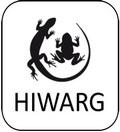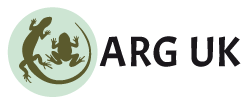About us
About Us
Hampshire is fortunate that the county covers a huge geographic area and a very diverse breadth of habitat including: the Isle of Wight, the New Forest National Park, the South Downs National Park, as well as many other unspoiled areas, including Woolmer Forest.
It is therefore unsurprising that we are host to 12 out of the 13 native amphibians and reptiles in UK, including rarities such as the Natterjack Toad, Sand Lizard and Smooth Snake, and wherever you live in the county there will be opportunities to survey and monitor an assemblage of amphibian and reptile species.
HIWARG formed in the Autumn of 2018 and is an affiliated independent ARG-UK group. The group focus is conservation of native UK species essentially around habitat management, surveying, public engagement, volunteer training & doing as much as possible to understand & protect the native species in the county.
All members are volunteers with a common interest.
If you have some spare time and would like to be involved with HIWARG, maybe you have taken a photo of a reptile or amphibian and would like it identified or maybe you have some other query, then please do get in contact info@hiwarg.org.uk
CONSERVATION THROUGH EMPATHY BY ENGAGEMENT
We now have a new website. Please visit https://hiwarg.org/
Visit HIWARG's Redbubble Shop to support our work www.redbubble.com/people/HIWARG/shop
News
News
Amphibian survey training
Following the increased amphibian activity with this mild weather I am thinking of starting some of our survey and ID training for members a little earlier.
If you are a HIWARG member, check your email address that you used to join with. I will be sending out a generic email to all members on how to access training and I will be sending provisional dates to all current amphibian surveyors and those waiting training.
If you are not a member, but are interested in becoming a HIWARG amphibian surveyor click the 'Join up' tag above.
Autumnal Amphibians
Temperatures look like they might be starting to drop to in a couple of weeks, but we are likely to continue to spot amphibians for a while yet until temperatures drop to 7°C or lower.
It will be really helpful if everyone can record all amphibians they see over the Autumn/Winter and if you can post your sightings here with the hashtag #hiwargautumnalamphibians2022 we can use this to track amphibians sightings to compare the last dates we see them and when they reappear again in the spring.
No need to visit ponds if you'd rather not in this weather, sometimes a torchlit walk in your garden, or an evening dog walk around 7pm is just as good for spotting amphibians out for a wander.
Please add your sightings to www.recordpool.org.uk and don't forget to post your photos her with the hashtag 🐸
Amphibian survey and ID training opportunities
Paid up HIWARG members keep an eye on your email inbox over the next couple of days. We will be emailing out details for upcoming amphibian survey and ID training opportunities.
If you are interested in becoming a member of HIWARG, visit our website at https://groups.arguk.org/hiwarg and click the "Join up or Log in" tab
Autumnal Amphibian Challenge
With this amphibian friendly weather, HIWARG are holding an autumnal challenge:
Visit a pond after dark with your torch, and a friend or two, and record the amphibians you spot. It is dark enough for torch surveys from 7pm ish onwards, so you could check out a pond on an evening walk with family or friends and still be home at a decent time. If you are heading to a pub or restaurant, check a pond out on the way. By using a torch, you don't need to get wet or messy, just stand next to the pond and shine your torch in the water. Stronger torches have better chances to illuminate amphibians beneath the water.
You can find everything you need to spot and ID amphibians in a pond by visiting our website's "Info and ID Guides" tab. We have uploaded everything from Risk Assessments and lone working guides to a range of ID sheets.
I will also be running some amphibian survey and ID sessions over the next few months. These will be open to members, but you can join us for £6 a year on our website under the "Join up or Login" tab.
You can share your sightings on our Facebook group as part of the challenge or for help with IDs. You can also post your photos on any social media platform with the challenge's hashtag below.
Finally, hashtag your FB group posts with #HIWARGAutumnalAmphibians2022 and lets see who gets the most sightings. Go!
Please remember to record your sightings on www.recordpool.org.uk as all records count.
Explosion in frog numbers after mass pond digging
Excerpt from BBC News:
"Switzerland has reversed the decline of more than half of endangered frogs, toads and newts in one region, research finds.
After conservationists dug hundreds of new ponds in the canton of Aargau, amphibian numbers significantly increased. The European tree frog population in particular "exploded", scientists say. Scientists hope this method could be used globally as pond building is simple and effective."
Read the full article here: https://www.bbc.co.uk/news/science-environment-63206140?fbclid=IwAR1buSxTRBcloHemHpCHmNst9tSoPDOsUTKTxFTvSwlgFbaRh1GDcDKO4do
Join up or Log In
Join up or Log In
Members sign in here
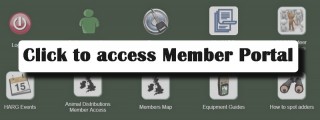
OR
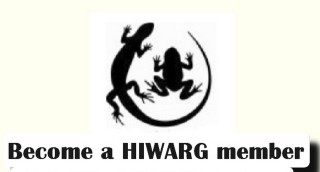
Membership costs just £6.00 per year as a subscription that can be cancelled at any time.
Your membership will help HIWARG to protect the amphibians & reptile of Hampshire.
Be aware of and take part in conservation opportunities, surveys and many other activities across the county.
Click here to go directly to PayPal to subscribe as a member:
Donate to HIWARG
Donate to HIWARG
Info & ID guides
Info & ID guides
Identification Guides
Amphibian Identification - downloadable colour cards : a great ID guide from ARG UK/ARC
Newt Eggs & Larvae - downloadable colour cards : an excerpt from the above guide, specifically on newt eggs and larvae
Its a small newt but which one : a HIWARG guide to help differentiate smooth newts and palmate newts
Reptile Identification - downloadable colour cards : a great ID guide from ARG UK/ARC
Non-Native Species ID Sheets (NNSS Website) : ID sheets from the Non Native Species Secretariat
Alien Amphibian and Reptile Species in the UK : A bilingual guide (English/Welsh) from ARC
Projects & Citizen Science
#BigGreenFrogHunt: Southern Clade Pool Frogs calling A YouTube video of southern clade pool frogs calling in North Hampshire
#BigGreenFrogHunt: Marsh frogs calling
DARN's 'Slow Worms in Churchyards' project
'Amphibians & Reptiles on Allotments' Introduction Leaflet
"Spawn Spotters" presentation 12 Jan 2021
Toad Patrol presentation 12 Jan 2021
Gotta love a larva presentation 9 July 2021
HIWARG Video: Spawn Spotters and Toad Patrols Jan 2021
HIWARG Video: Amphibian surveys: ID'S & Survey Methods March 2021
Habitat Management and Creation
![]() Reptile Habitat Management Handbook
Reptile Habitat Management Handbook
![]() Amphibian Habitat Management Handbook
Amphibian Habitat Management Handbook
Creating Garden Ponds - downloadable booklet
Creating Ponds for Amphibians and Reptiles (Freshwater Habitats Trust)
Guide to the Restoration, Creation and Management of Ponds (Freshwater Habitats Trust)
Habitat Management guides (Buglife) - Not specifically herp based but a great set of guides
How to Create Invertebrate and Reptile Mounds (Magnificent Meadows)
Creating Grass Snake Egg-laying Heaps (ARG UK and RAVON)
Advice and Information
ARC's "Dogs and Adders" Advice Sheet
"There is a Snake in my Garden - What can I do?" (ARG UK)
Policies/Health & Safety
HIWARG Safeguarding Policy and Protocols June 2020
Buddy System/Lone Working Procedures
ARG UK Generic Risk Assessment July2020
Herp Diseases - Recognise & Report
REPORT SICK OR DEAD WILDLIFE TO GARDEN WILDLIFE HEALTH
Advice Note-4: Amphibian disease precautions - a guide for UK fieldworkers
Reptile Slough Genebank - collection & submission of found sloughs
Garden Wildlife Health - Severe Perkinsea Infection (SPI)
Other
Fixing Enkamat to Gully Pots - Initial Findings in Sussex
Useful glossary of terms often used within the herpetological field. (Credit due - unknown)
Kids stuff - Educational items for the young ones
Pond pack Animal fact sheets Animal colouring sheets
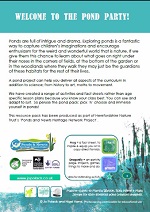
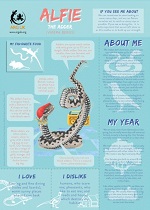
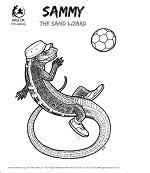
Photo gallery
Photo Gallery
Contact us
Contact Us
If you would like more information about HIWARG or have something to share with us, please get in touch via the link to our social media presence.
Upcoming Events
Upcoming events will be listed here.
Latest News
- Big Green Frog Hunt 2024
21/05/2024 6:16 pm - Midwife Toads in the Winchester (Littleton, Weeke and Teg Down areas in particular) and possibly Colden Common areas
18/06/2023 8:11 pm - Midwife Toads in Hampshire 2023
19/04/2023 11:05 pm - Stuck for something to do over the Easter Weekend?
05/04/2023 11:20 pm - Toads need your help
21/02/2023 12:23 am
© Hampshire And Isle of Wight Amphibian and Reptile Group (HIWARG)
Website hits: 51921
View All | Find out how to get a mini-website for your ARG
© ARG UK Local Groups mini-websites 2025
Wind powered websites by Aye-aye Design.
